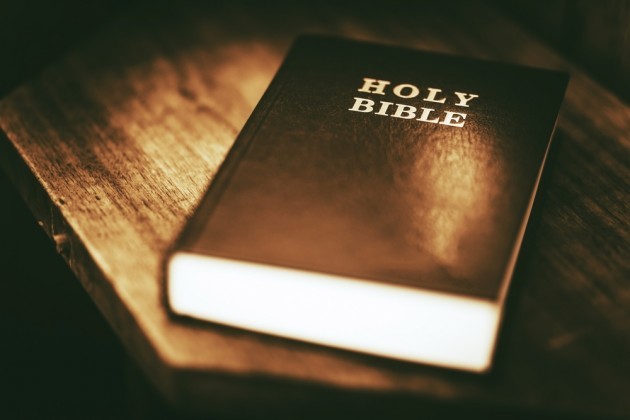Introduction |
Lecture 1 |
Lecture 2 |
Lecture 3 |
Lecture 4 |
Lecture 5 |
Some After Words |
References |
Chart
Some After Words
1. During every period of the "Dark Ages" there were in existence many Christians and many separate and independent Churches, some of them dating back to the times of the Apostles, which were never in any way connected with the Catholic Church. They always wholly rejected and repudiated the Catholics and their doctrines. This is a fact clearly demonstrated by credible history.
2. These Christians were the perpetual objects of bitter and relentless persecution. History shows that during the period of the "Dark Ages," about twelve centuries, beginning with A.D. 426, there were about fifty millions of these Christians who died martyr deaths. Very many thousands of others, both preceding and succeeding the "Dark Ages," died under the same hard hand of persecution.
3. These Christians, during these dark days of many centuries, were called by many different names, all given to them by their enemies. These names were sometimes given because of some specially prominent and heroic leader and sometimes from other causes; and sometimes, yea, many times, the same people, holding the same views, were called by different names in different localities. But amid all the many changes of names, there was one special name or rather designation, which clung to at least some of these Christians, throughout all the "Dark Ages," that designation being "Ana-Baptist." This compound word applied as a designation of some certain Christians was first found in history during the third century; and a suggestive fact soon after the origin of Infant Baptism, and a more suggestive fact even prior to the use of the name Catholic. Thus the name "Ana-Baptists" is the oldest denominational name in history.
4. A striking peculiarity of these Christians was and continued to be in succeeding centuries: They rejected the man-made doctrine of "Infant Baptism" and demanded rebaptism, even though done by immersion for all those who came to them, having been baptized in infancy. For this peculiarity they were called "Ana-Baptists."
5. This, special designation was applied to many of these Christians who bore other nicknames; especially is this true of the Donatists, Paulicians, Albigenses and Ancient Waldenses and others. In later centuries this designation came to be a regular name, applied to a distinct group. These were simply called "Ana- Baptists" and gradually all other names were dropped. Very early in the sixteenth century, even prior to the origin of the Lutheran Church, the first of all the Protestant Churches, the word "ana" was beginning to be left off, and they were simply called "Baptists."
6. Into the "dark ages" went a group of many churches which were never in any way identified with the Catholics. Out of the "dark ages" came a group of many churches, which had never been in any way identified with the Catholics.
The following are some of the fundamental doctrines to which they held when they went in: And the same are, the fundamental doctrines to which they held when they came out: And the same are the fundamental doctrines to which they now hold.
Fundamental Doctrines
1. A spiritual Church, Christ its founder, its only head and law giver.
2. Its ordinances, only two, Baptism and the Lord's Supper. They are typical and memorial, not saving.
3. Its officers, only two, bishops or pastors and deacons; they are servants of the church.
4. Its Government, a pure Democracy, and that executive only, never legislative.
5. Its laws and doctrines: The New Testament and that only.
6. Its members. Believers only, they saved by grace, not works, through the regenerating power of the Holy Spirit.
7. Its requirements. Believers on entering the church to be baptized, that by immersion, then obedience and loyalty to all New Testament laws.
8. The various churches -- separate and independent in their execution of laws and discipline and in their responsibilities to God--but cooperative in work.
9. Complete separation of Church and State.
10. Absolute Religious liberty for all.
Introduction |
Lecture 1 |
Lecture 2 |
Lecture 3 |
Lecture 4 |
Lecture 5 |
Some After Words |
References |
Chart
The Great Sermon
Presented by Brother Jeff Barron (1952-2025), former pastor of Edgewood Missionary Baptist Church, Danville, Georgia, at the Rocky Mountain Missionary Baptist Association Meeting hosted by Landmark Missionary Baptist Church, Lakewood, CO on August 10, 2012.
The Kingdom of Heaven with an Earthly Mission
Presented by Brother Jim Brasseal (1939-2021) at the Rocky Mountain Missionary Baptist Association Meeting hosted by Landmark Missionary Baptist Church, Lakewood, CO on August 10, 2012.
The Trail of Blood
A small booklet written By Dr. J. M. Carroll (1858-1931) that details the history of the Lord’s churches through the ages and identifies the marks of a true New Testament Bible teaching church.
The Influence of Baptists
This article originally appeared in the May 1999 edition of the “West Florida Baptist News” (a publication of the West Florida Baptist Institute). Used with permission.
